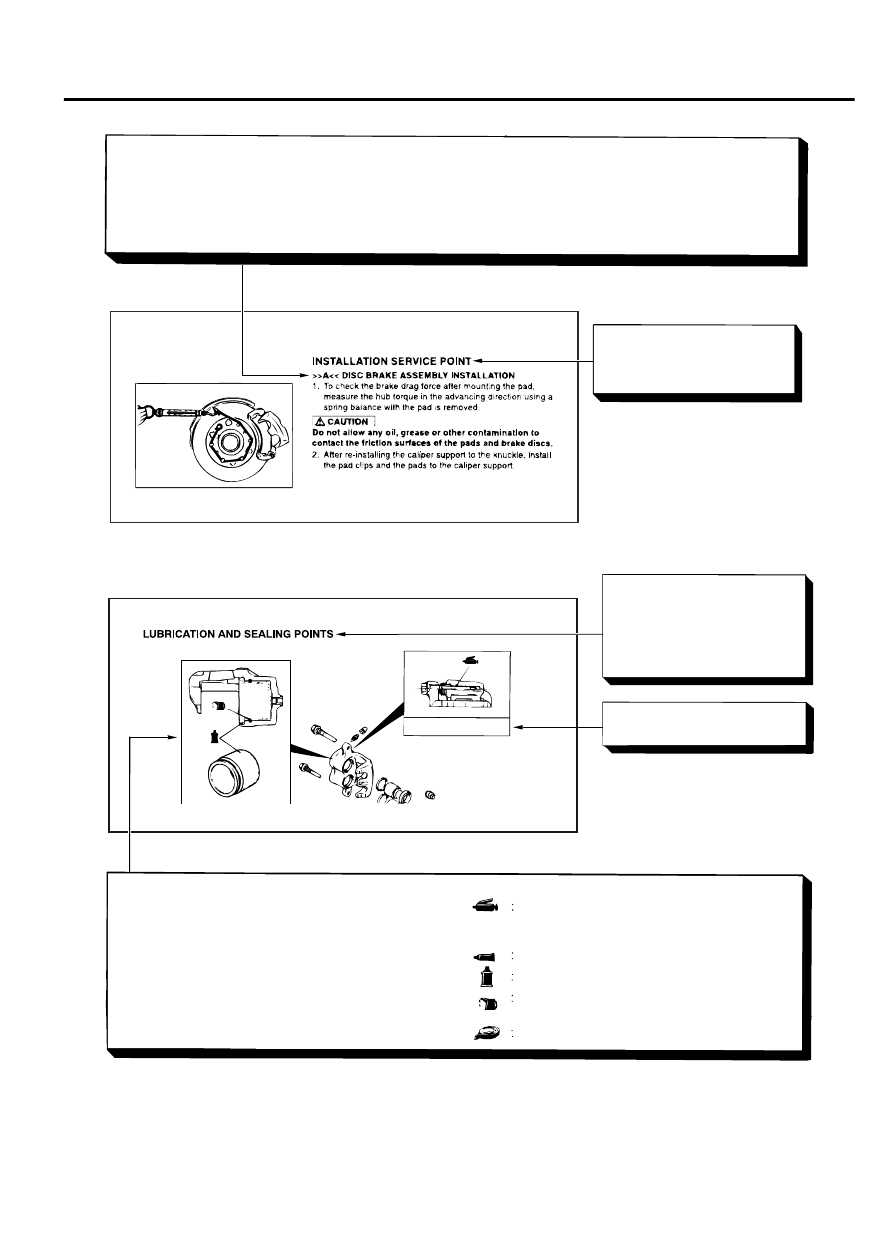Mitsubishi Outlander XL. Manual - part 49

Classifications of major maintenance / service points
When there are major points relative to maintenance and servicing procedures (such as essential maintenance
and service points, maintenance and service standard values, information regarding the use of special tools, etc.).
These are arranged together as major maintenance and service points and explained in detail.
<<A>> : Indicates that there are essential points for removal or disassembly.
>>A<< : Indicates that there are essential points for installation or assembly.
Operating procedures,
cautions, etc. on removal,
installation, disassembly and
assembly are described
The title of the page
(following the page on which
the diagram of component
parts is presented) indicating
the locations of lubrication and
sealing procedures.
Indicates (by symbols) where
lubrication is necessary.
Symbols for lubrication, sealants and adhesives
Symbols are used to show the locations for lubrication
and for application of sealants and adhesives.
These symbols are included in the diagram of
component parts or on the page following the
component parts page. The symbols do not always
have accompanying text to support that symbol.
Adhesive tape or butyl rubber tape
Grease
(Multi-purpose grease unless there is a
brand or type specified)
Sealant or adhesive
Brake fluid or automatic transmission fluid
Engine oil, gear oil or air conditioning
compressor oil
Grease: repair kit grease
ZC6012880000
GENERAL <BODY AND CHASSIS>
00-5
HOW TO USE THIS MANUAL